Collecting Rainwater and Eggs From a California Chicken Coop
http://decor-ideas.org 05/31/2014 18:17 Decor Ideas
When Teddy, Laura and their daughter, Ellie, decided to add chickens to their small ranch in a canyon in Santa Barbara, California, they tapped their creative friend, artist and designer Alex Wyndham, to design it for them. The couple, both teachers, already had a great organic garden on the property and wanted to add eggs to the food they produce.
Wyndham designed a structure that could collect rainwater, as every drop counts in Southern California. As for the chickens, he had raised some as a child but dug into researching the kinds of spaces chickens like and the basic tenets of chicken coops.
Photography by Sarah Fretwell
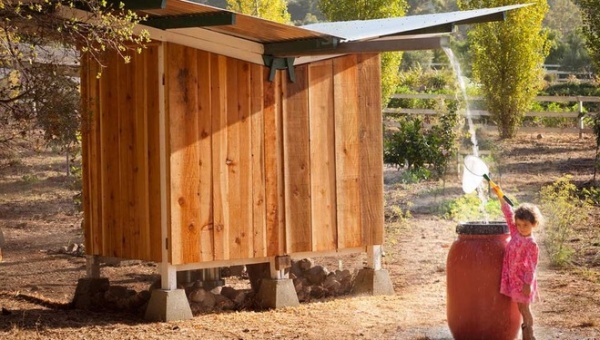
Ellie, shown here, is enamored of the chickens. “She loves to hold them and show them to everyone who comes over,” Wyndham says.
Water collection inspired the butterfly roof. Wyndham knew creating a roof shaped like a bird’s wings would direct all the water to the center, requiring only one spout and one rain barrel for water harvesting. (This photo was staged with a hose to show you how it all works.)
During a drizzly rain, Wyndham says the 50-gallon drum fills up in about a day; during a hard rain, it takes only a few hours. His one wish is that they had used a larger tank so that winter rains could be collected to last through summer.
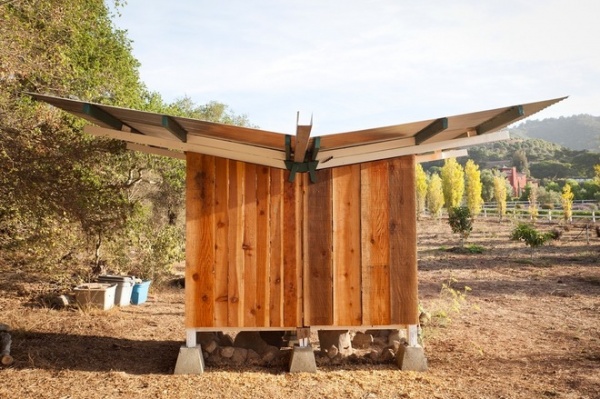
The coop itself is 4 feet by 8 feet, but the larger roof provides shade and shelter from the rain, in addition to the water it collects.
The couple’s old redwood barn also influenced the structure. The siding is rough-sawn redwood fencing. The roof is corrugated steel.
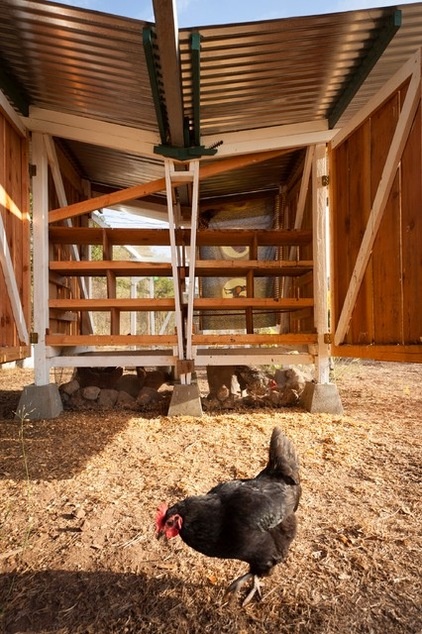
The doors don’t have any trim and are flush when closed. The hinges adjust to keep the doors in place when open. When the family is out in the yard, they let the chickens roam — and the chickens love the space beneath the raised structure. “It’s another shady spot for them to hang out, like their own little cave,” Wyndham says.
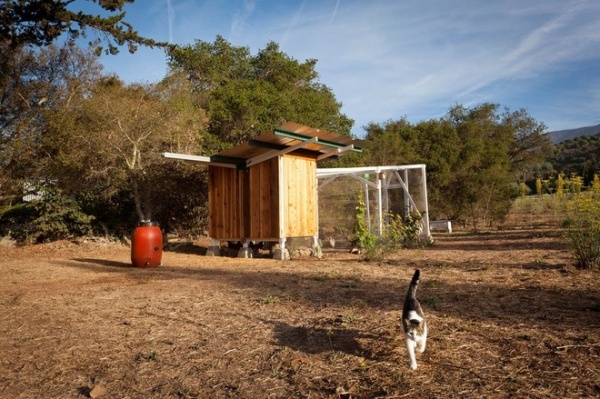
A run off the back is covered in chicken wire, including the space underneath it, where the wire is buried about 6 inches beneath the dirt to keep out predators like raccoons and coyotes. The chickens always have full access to the run. As for the family cat, Wyndham says, “It’s all cool,” and that the animals get along just fine.
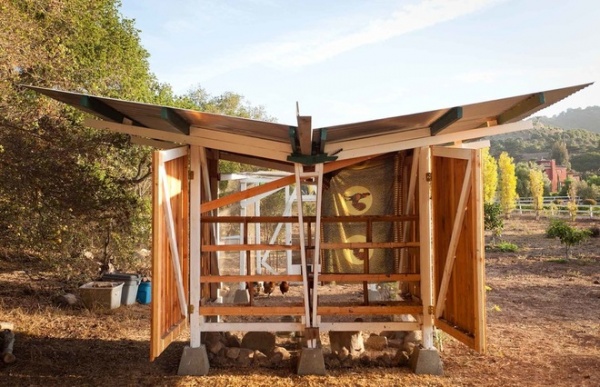
Wyndham and his friends salvaged boards that had broken or fallen off their barn, to use for part of the structure and for the egg-laying shelves inside. While the couple currently has eight or nine hens and one rooster, the coop has room for up to 40.
This project was a great creative outlet if not a huge moneymaker for Wyndham, who enjoyed helping out his good friends. And he did earn a lifetime supply of fresh eggs.
Next: Ways to farm your yard
Related Articles Recommended












